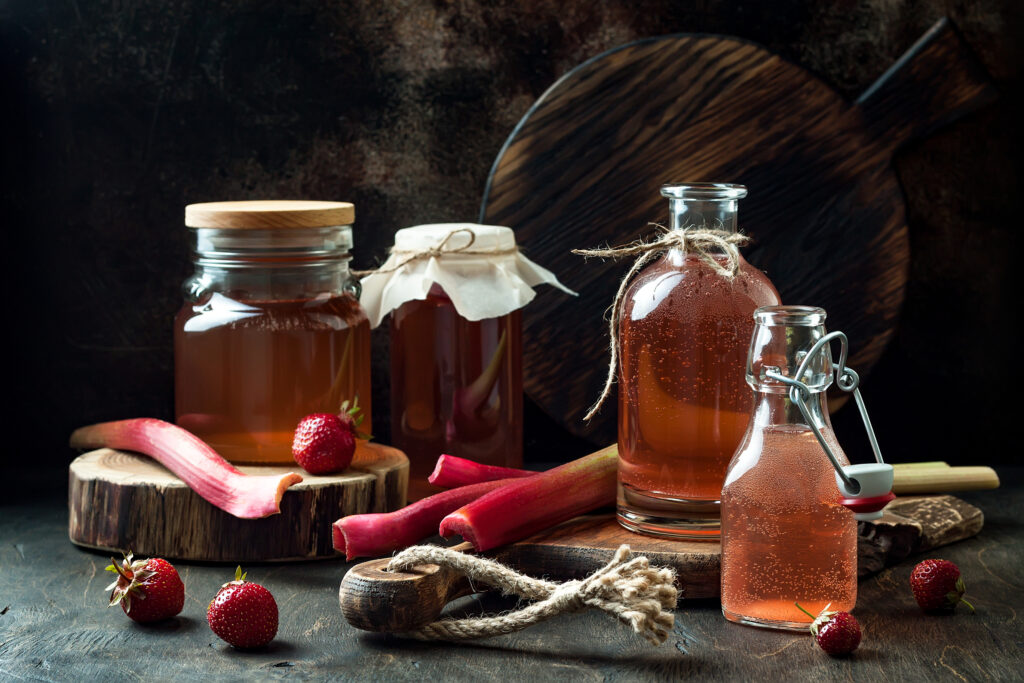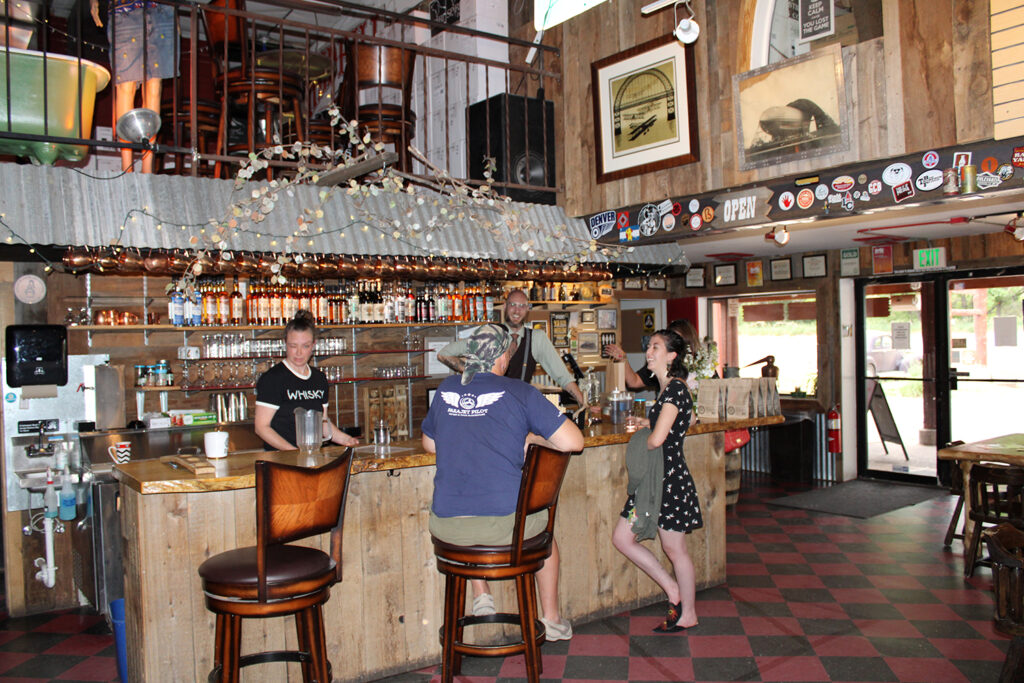By: Hanifa Sekandi

With some degree of certainty, it can be said that alcohol and health do not go hand-in-hand; however, a new wave of prepared alcoholic beverages would like to change that. Can the well-ness and beverage industries form a new frontier where imbibing supports a healthy lifestyle? Believe it or not, it’s happening. From alternative sweeteners to organic ingredients, there is a steady move away from artificial by-products in craft drinks. It is easy to read the room and rec-ognize that having fun does not mean entirely sacrificing your health.
Alternatively, the movement might be partially due to the popularity of curated cocktails made by world-renowned mixologists. Further, people are looking for the at-home, a la carte experi-ence, and ready-to-drink alcoholic beverage innovators and game changers are taking note. High alcohol kombucha is turning heads both in the wellness and alcohol industries.
What is Kombucha?
Kombucha, an ancient, probiotic-rich, carbonated, sourish, gut health-friendly tea, has become a popular beverage in the wellness industry in the last few decades. It’s not new, but over the pre-vious 10 years, mainstream society has finally caught on to its benefits.
Traditionally, kombucha contains alcohol. Not enough to leave you with a hangover or lead you to any hazy decisions but a small amount that occurs during fermentation. How much alcohol is dependent on the length of time the tea is fermented. So it is no surprise that producers see an easy entry point into the RTD alcoholic beverage market. Who knew beer and kombucha would make a robust blend or that it would pair well with gin or vodka? All good beverages start at the bar with skilled mixologists who can create drinks in real-time. They create a demand for one-of-a-kind cocktails at your local liquor store. You may have noticed CBD is the newest addition to luxe cocktails, but for now, it’s all about bubbling kombucha.
Healthy Origins
Kombucha has been touted as the ultimate tart gut health elixir, but how did it come to be known that way? Before exploring the possible benefits of kombucha, let’s first trace the origins of this primordial fermented beverage. Although new in the west–only making waves for the last 60 years–the drink dates back approximately 2,000 years in both China and Japan; however, it isn’t easy to pinpoint an exact moment when it was invented.
The origin of the name is slightly easier. Sources say that around 400 AD, when the emperor of Japan, Emperor Inkyo, was ill, Korean Dr. Kombu brought the tea from China to help the ailing ruler. Adding the Japanese word for tea, cha, to the end of the doctor’s name made it Kombucha. At this time, it was used for its believed curative properties.
The growth of European trade routes in the early 20th century opened the doors for people around the world to reap the benefits from this ancient slow-brewed tea. As with the wine indus-try, kombucha also experienced a slump due to the second world war that saw a decline in sugar and tea reservoirs.
Kombucha’s gut health benefits were brought to the forefront after a study conducted in the 1960s in Switzerland documented that kombucha could have the same probiotic benefits as yo-gurt. This discovery sparked a wave of interest in kombucha. It first saw growth with family-owned brands sold in small health-centric markets and then drew the attention of corporations who saw the monetary possibilities of this fermented tea. Its steady consumer popularity has been due to the purported medicinal benefits for individuals suffering from various health condi-tions. Everybody knows at least one person who swears by it and drinks it daily.
How is Kombucha Made?
Anyone considering homebrewing kombucha has most likely heard about a SCOBY. A SCOBY is a “symbiotic culture of bacteria and yeast.” Since it can be used to make several batches of tea, it’s considered fermentation gold. Traditional kombucha combines tea –generally green tea, but also black– sugar, strains of bacteria and yeast. The mixture undergoes fermentation for approx-imately a week. During this time, gases, acidic elements and small amounts of alcohol produce carbonation. Be cautious when considering DIY Kombucha since there are health risks due to contamination or fermenting too long. The longer kombucha ferments, the higher the alcohol content, and it also reduces the potential medicinal properties.
Hard Kombucha contains approximately 3% to 11% ABV. Larger quantities of sugar and yeast are added during a dual fermentation process to increase the alcohol content.
What are the Benefits?
Most people do not consider the health benefits of a cocktail. Even a mimosa and freshly squeezed orange juice do not scream, “I am being healthy!” But, since oranges are full of vitamin C, you might feel a little less guilty during a Sunday brunch with this citrus-laden bubbly. Mak-ers of kombucha drinks are likewise stating their case. Although it may not be as probiotic-rich once fermented into hard kombucha or when it’s paired with beer or other spirits, it remains an antioxidant-rich fermented tea that is easier on the gut. This applies particularly to gluten-free hard kombucha. Hard kombucha also has a lower caloric content and far less sugar than other prepared cocktails, beer and cider. However, although kombucha is known to promote gut health, it is not one size fits all. The gut microbiome varies from person to person. Hence, the probiotic strains found in kombucha may be beneficial for you and not others.
Why does gut health matter? The gut is the epicenter for health and vitality. It not only takes in vitamins and minerals from the food you consume, but it also helps to regulate inflammatory re-sponses in your body. Good gut bacteria allow the body to digest food and absorb nutrients. Like yogurt, kefir, sauerkraut, and other fermented food, Kombucha is probiotic-rich and contributes to balanced gut flora. It is primarily made with green tea, an anti-inflammatory and antioxidant-rich tea that also contains minerals, and is known for its ability to contribute to fat burning. It is an ideal alcoholic drink for individuals who consider calories when purchasing alcohol. Drinking an alcoholic beverage made with kombucha, particularly one not combined with beer or any al-cohol produced with wheat, may also be helpful for those with gut sensitivities or inflammation.
What Place Does it Have in the Alcohol Industry?
You may have spotted hard kombucha next to ready-to-drink organic cocktails, beers and ciders at the local health store. Kombucha with an ABV of 0.5% is deemed an alcoholic beverage under federal law. The higher the ABV, you will notice that it is called high alcohol kombucha. High alcohol kombucha can reach ABV levels close to wine or other ready-made cocktails.
On the surface, blending kombucha and alcohol does not seem a likely pairing, but, with its in-creased popularity and ability to stand on its own as a thirst-quenching alcoholic beverage, it’s easy to see why large corporations like Molson Coors are getting on board. Their acquisition of Clearly Kombucha shows a shift toward lower-alcohol drinks. The ability to craft kombucha with varying ABVs and the fact that it already contains trace amounts of alcohol render this a natural progression into alcoholic beverages. Kombucha makers are not reinventing the wheel. With a little more added yeast and sugar, they are just letting this fermented drink do what it does on its own.
The appeal of a low calorie, low carb, low sugar, gluten-free kombucha beer is there for anyone who already enjoys the non-alcoholic version, as well as for those who look for health-conscious brands that support and encourage better lifestyle choices. Even knowing that high levels of al-cohol kill or diminish the probiotic benefits found in traditional kombucha, the other benefits make it a tempting drink. It offers the best of both worlds: a calming drink and a happier gut.








